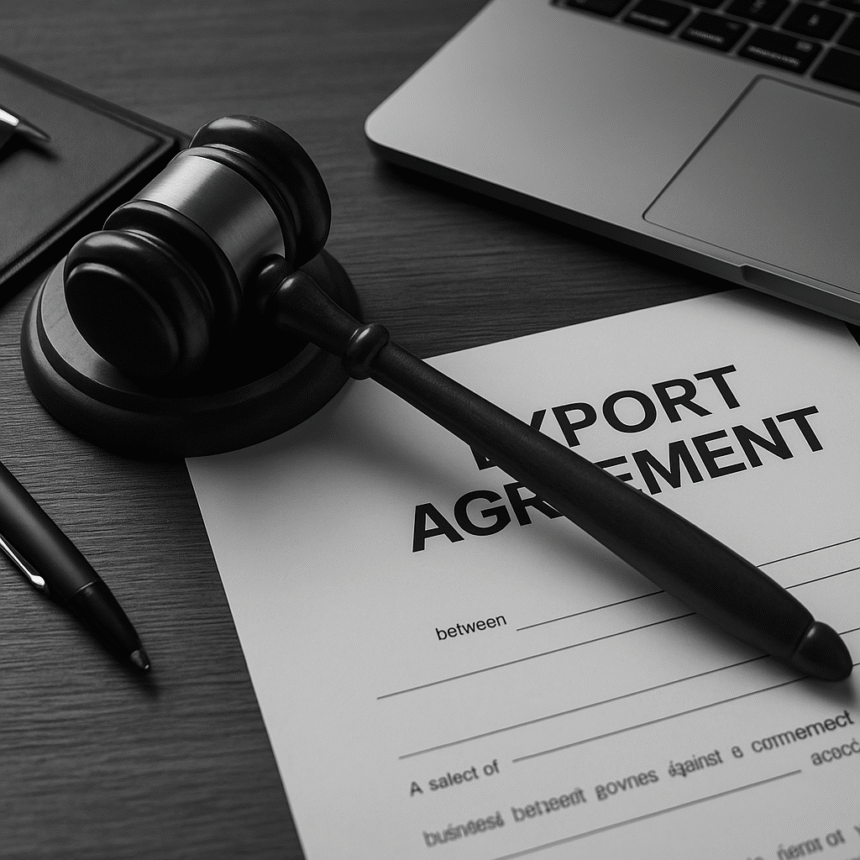How to Draft an Export Agreement for Raw Minerals
Exporting raw minerals—like copper ore, iron ore, or lithium—can be a high-reward opportunity. But without a strong export agreement in place, the risks of delayed payments, quality disputes, or logistics failures rise quickly. An export agreement protects both parties and ensures the deal is clear, legal, and enforceable.
In this guide, you’ll learn how to draft a professional, legally sound export agreement for raw minerals—even if you’re not a lawyer.
Who This Is For / When to Use It
This article is written for:
- Mineral exporters and traders working across borders
- Importers purchasing bulk raw materials
- Mining startups entering global markets
- Legal, procurement, or logistics professionals supporting mineral trade deals
Use this guide when:
- Exporting minerals for the first time
- Expanding to new markets with unfamiliar laws
- Working with a new partner or off-taker
Step-by-Step Instructions
Step 1: Identify the Parties and Purpose
Start by clearly stating:
- The Exporter (seller) and Importer (buyer)
- Business names, addresses, and registration details
- A brief description of the purpose (e.g., “This Agreement governs the sale and export of copper ore from Nigeria to China.”)
Tip: If a broker is involved, mention their role in a separate clause.
Step 2: Define the Goods Being Sold
Be as specific as possible. Include:
- Type of mineral (e.g., copper ore, iron ore)
- Purity or grade (e.g., Cu 18% minimum)
- Quantity (e.g., 5,000 metric tons per month)
- Tolerances (e.g., +/- 5%)
Legal tip: Reference lab analysis standards (e.g., SGS or Intertek) to avoid disputes over quality.
Step 3: Set Pricing and Payment Terms
Detail the agreed pricing structure:
- Price per metric ton (e.g., $120/MT FOB Lagos Port)
- Currency of payment
- Payment method (e.g., LC, TT, Escrow)
Common payment options:
- Letter of Credit (LC): High security for seller but needs accurate documents
- Telegraphic Transfer (TT): Faster but riskier without pre-payment or milestone payments
Include:
- Payment due dates
- Penalties for late payment
Step 4: Delivery and Incoterms
Clarify:
- Delivery point (e.g., FOB, CIF, CFR)
- Port of loading and discharge
- Delivery schedule (monthly, bulk, or spot deal)
Use official Incoterms (2020) and explain who handles:
- Freight and insurance
- Customs and documentation
- Loading/unloading
Common mistake: Using vague terms like “buyer arranges shipping” without referencing formal Incoterms.
Step 5: Inspection and Quality Control
To prevent disputes, include an inspection process:
- Independent lab (SGS, Bureau Veritas, Intertek)
- Sample collection method
- When and where the inspection takes place
Example: “Final quality will be based on SGS inspection report at the port of loading.”
Step 6: Risk Allocation and Insurance
Clarify when risk transfers:
- Under FOB: when goods pass ship’s rail
- Under CIF: seller must insure goods until arrival port
Insurance tip: List who provides marine insurance and what risks are covered.
Step 7: Dispute Resolution and Governing Law
Add a dispute clause:
- Choose mediation, arbitration, or court
- State venue (e.g., London Court of International Arbitration)
- Specify governing law (e.g., English law, UAE law)
Important: A clear dispute clause avoids uncertainty and delays in enforcement.
Mini Case Study: Why Incoterms and Lab Reports Matter
A Nigerian exporter signed a deal to ship 10,000 MT of iron ore to a Chinese buyer. The agreement said “quality subject to buyer confirmation.”
After delivery, the buyer claimed the ore was below 60% Fe and refused payment. There was no agreed lab, and the exporter didn’t document port-of-loading quality.
After months of back-and-forth, they settled at a 30% discount.
Lesson: Always use third-party labs and standard Incoterms to define risk and quality responsibility.
Closing Thoughts + Call-to-Action
Drafting a strong export agreement isn’t just about legal protection—it’s about setting the right expectations from day one.
A clear, well-written contract reduces misunderstandings, protects your margins, and builds long-term trust with buyers.
Need a ready-to-use export agreement template for raw minerals? Book a call .



Leave a Reply